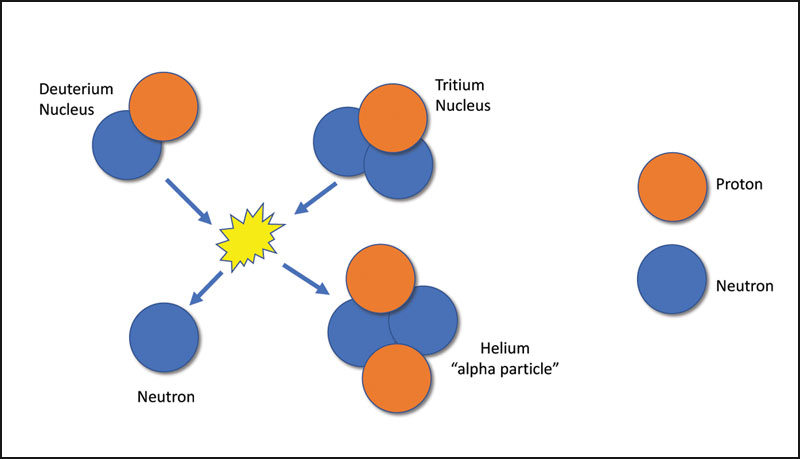Sustainable fusion power is hard work – but it’s worth the effort

 Last month, I promised to describe some of the ways scientists and engineers are trying to recreate the energy-producing fusion reactions of the sun and stars.
Last month, I promised to describe some of the ways scientists and engineers are trying to recreate the energy-producing fusion reactions of the sun and stars.
First, I want to review the basic process required to produce useful energy. It always begins with a plasma – a very hot, charged gas composed of ions and free electrons. When light nuclei (protons + neutrons) combine into heavier nuclei, they produce energy that is carried away by the reaction products.
A combination of three criteria is essential for producing a sustainable fusion reaction:
- Sufficient energy (high temperature) to overcome the electromagnetic barrier and allow the short-range strong force to take over and bind the two lighter nuclei.
- Confine the plasma long enough to produce enough reactions.
- Density to increase the probability of an interaction.
Creating clean energy
Building a power plant based on nuclear fusion has several formidable challenges, yet there are several reasons to pursue it. It would be a virtually limitless source of clean energy. The reactor would be fueled by deuterium, an isotope of hydrogen found in seawater, and tritium, another isotope of hydrogen that would be produced in the reactor.
Compared to a fission reactor, it would produce less and shorter-lived radioactive waste with no danger of a runaway reaction or meltdown.
There are several approaches to producing a sustainable fusion reaction, but I’ll focus on one. First create a plasma by heating up a gas. No problem. Next, confine and heat the plasma to about 100 million degrees.
The plasma cannot be allowed to touch any material, as it would immediately cool or damage the walls of the reaction chamber. Magnetic fields exert a force on charged particles and are used to contain the plasma, a technique referred to as “magnetic confinement.”
In a device called a Tokamak, a doughnut-shaped chamber contains the plasma in a ring. Now it gets really difficult. The plasma must be squeezed using subtle combinations of very strong magnetic fields to increase the density and produce sufficient reactions. Imagine taking a handful of gelatin and trying to compress it in your hands without any squirting out. So-called plasma instabilities are the most challenging aspect of developing a fusion reactor.
Deuterium and tritium are favored as reactor fuel not only for their availability but also because they each have a single electric charge (one proton), minimizing the repulsive force. The deuterium and tritium nuclei fuse to produce a helium nucleus and a neutron that carriers away a large fraction of the energy.
The neutron is not affected by the magnetic field and will hit the chamber wall, giving up its energy, producing more fuel (tritium) and generating heat that will make steam to drive a turbine.
Closing the gap?
Fusion energy has been pursued for decades. There is an old joke that says, “Fusion power is only 30 years away and will always be 30 years away.” Despite the many challenges, the immense potential drives the community to keep moving forward.
There are currently many active programs around the world, the largest being the International Thermonuclear Experimental Reactor (ITER) in France. There has been a recent breakthrough that may shorten the “30-year” timeframe for putting fusion power on the grid. A partnership between MIT and a private company has built a very high field magnet that promises to reduce the size (and cost) of future Tokamaks.
It’s a significant step forward and there are still many problems to resolve, but with persistence and patience, it could happen.
For more information, visit iter.org/mach/Tokamak, cfs.energy/news-and-media/cfs-commercial-fusion-power-with-hts-magnet or news.mit.edu/2021/MIT-CFS-major-advance-toward-fusion-energy-0908.

Steve Gourlay
Steve Gourlay is a career scientist with a PhD in experimental particle physics. He recently retired after working at the Fermi National Accelerator Laboratory, CERN (the European Center for Nuclear Research) and the Lawrence Berkeley National Laboratory. Send questions and comments to him at sgpntz@outlook.com.
